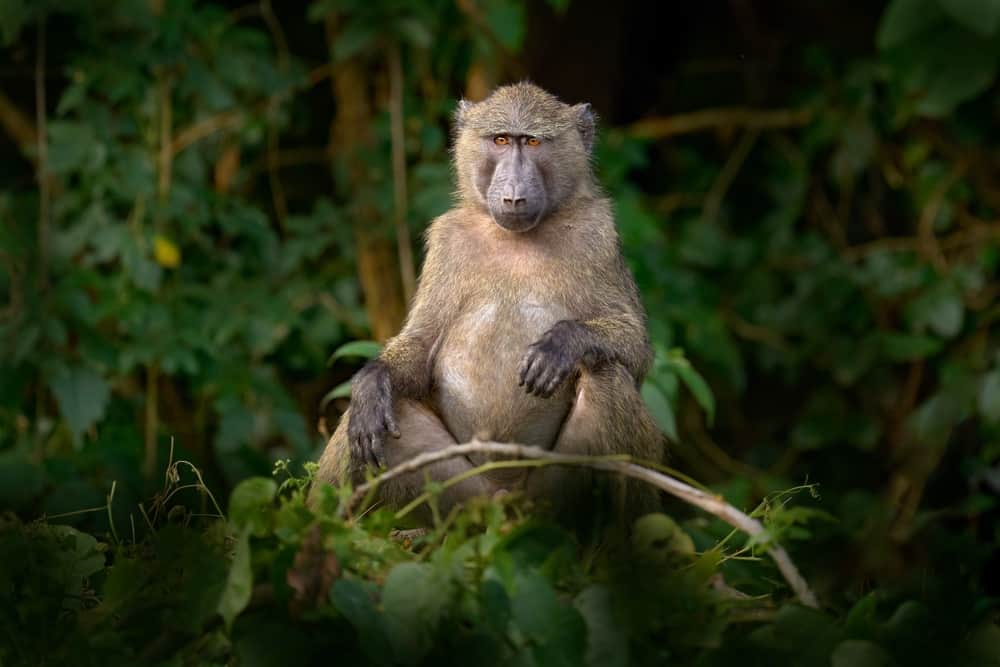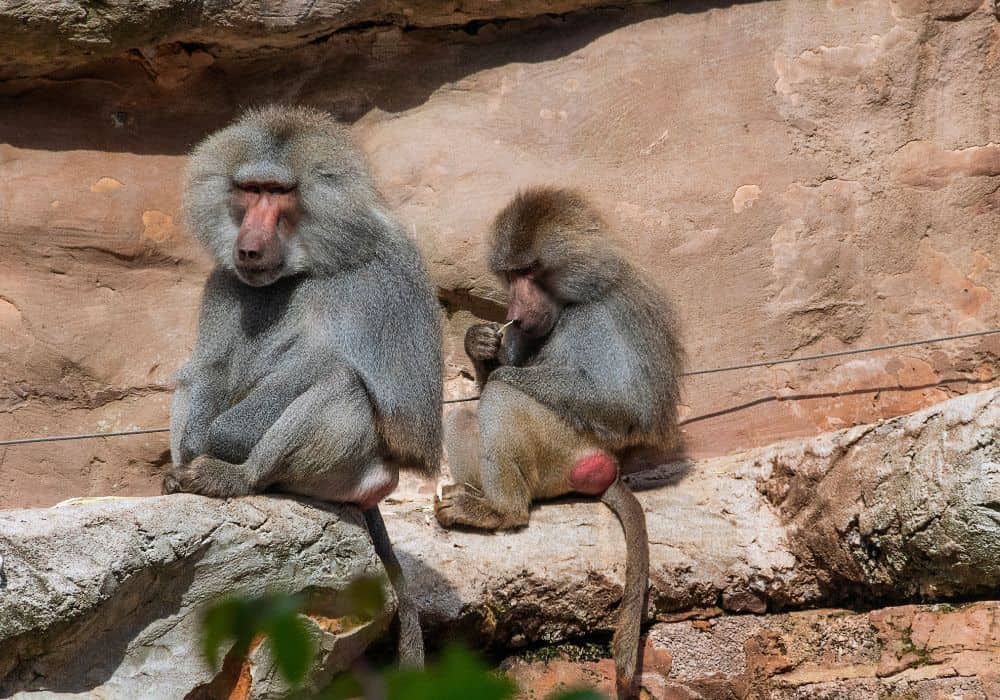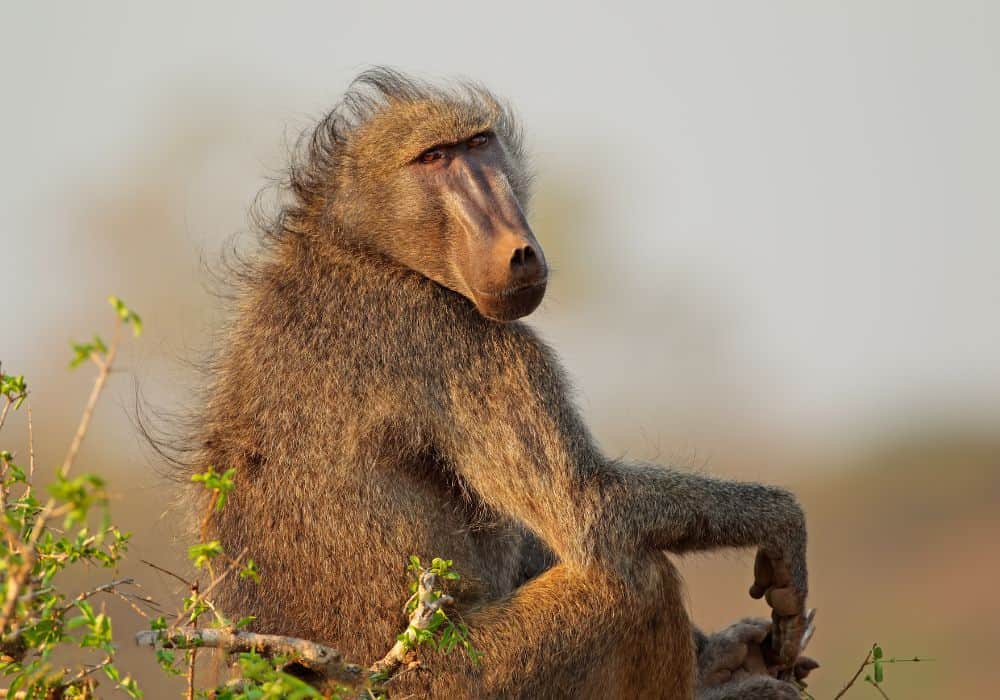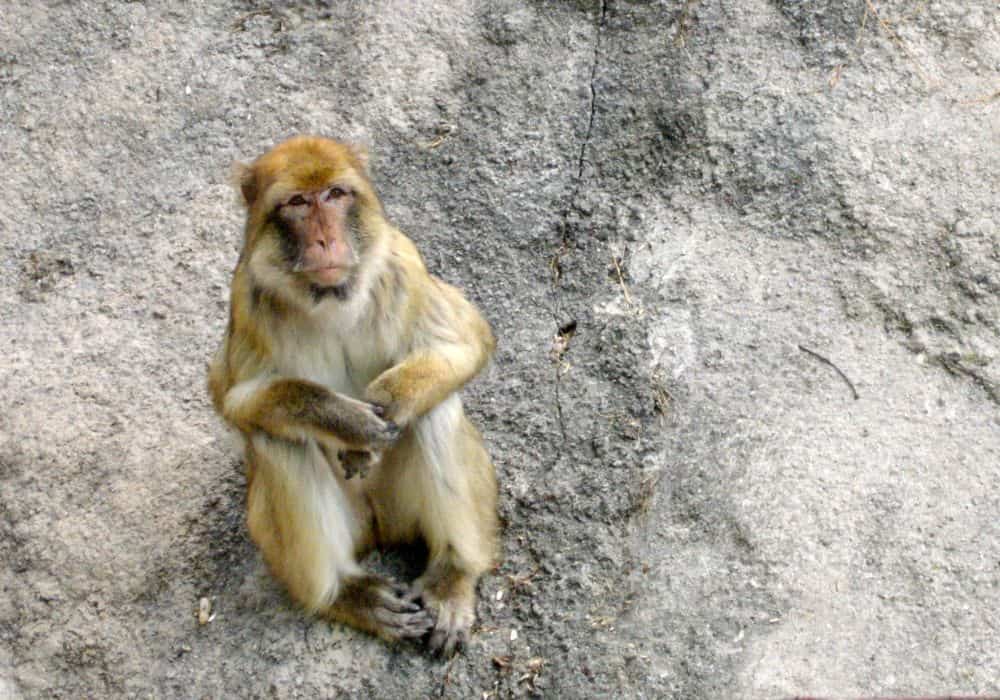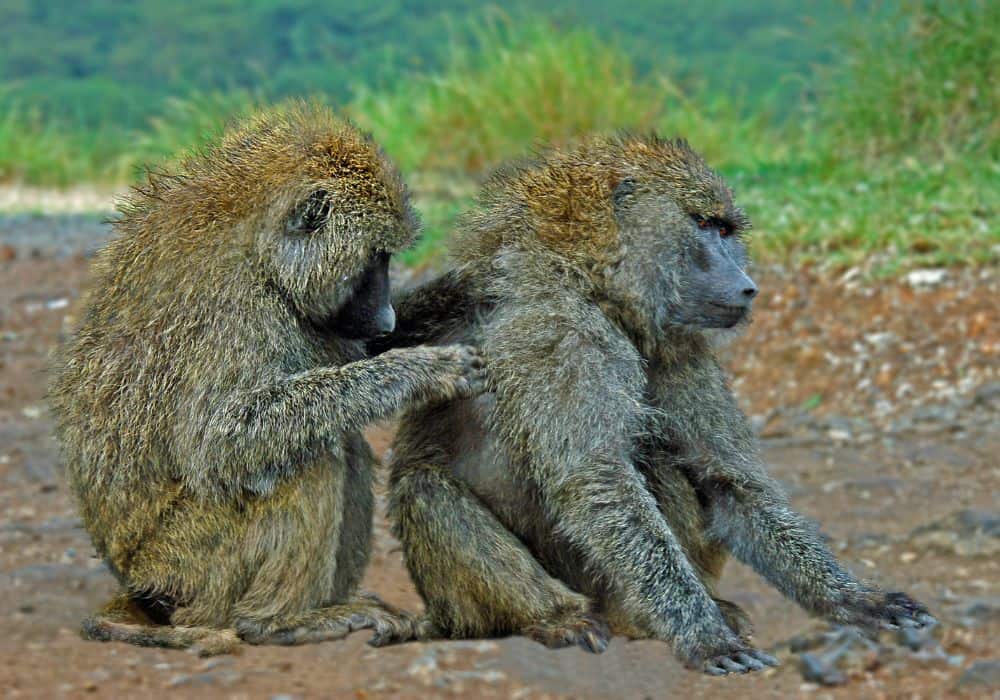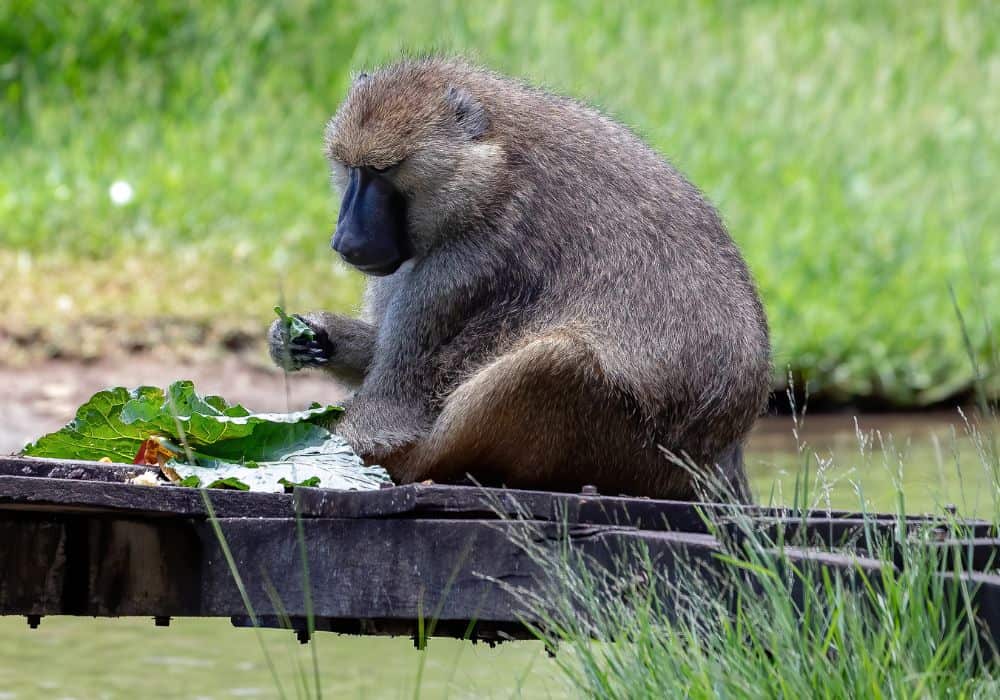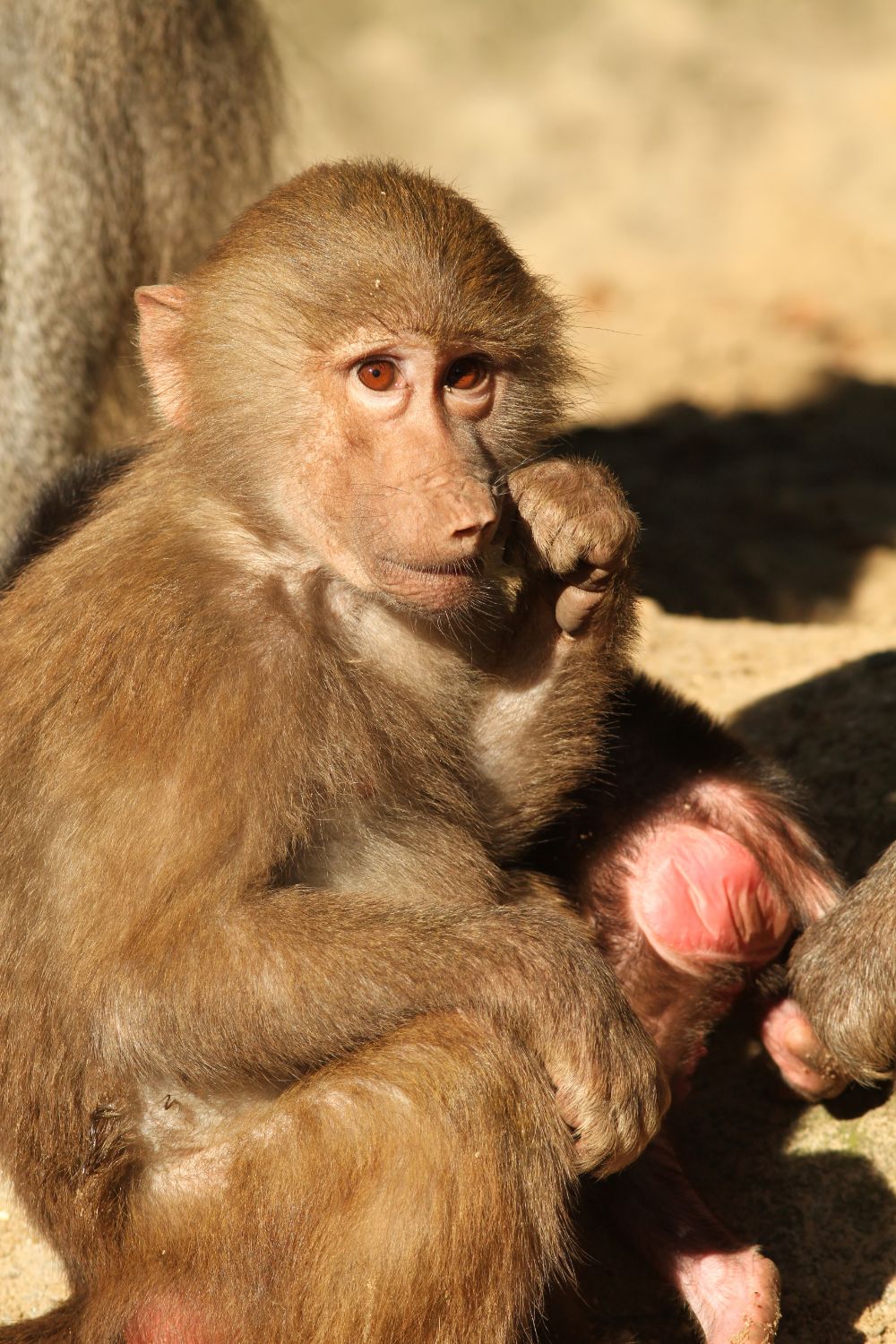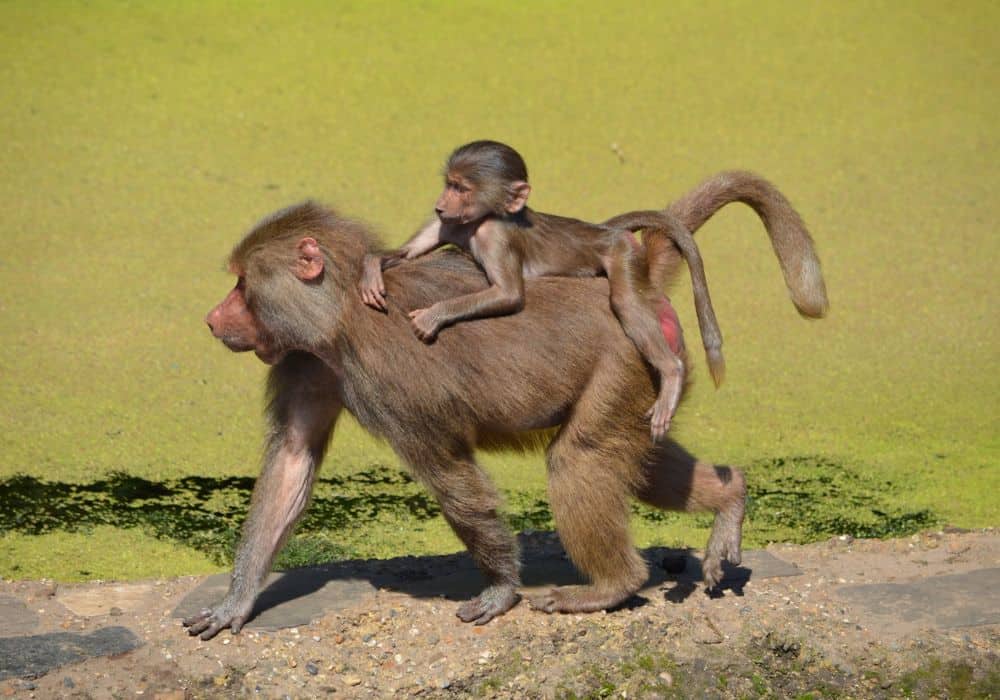The University of Notre Dame reports that baboons and humans are closely related. This is why a study from Texas finds these primates as a good model when it comes to obesity.
Does this mean these animals eat the same foods as humans? In this article, we will discuss the appearance, lifestyle, types, habitat, diet, and other facts about baboons.
Facts About Old World Monkeys: Baboons
According to the Integrated Taxonomic Information System (ITIS) of the United States, baboons belong to the genus Papio, under the order of primates. They have a complex hierarchy where a dominant male governs troop members.
Physical Characteristics: Females vs Males
Baboons have close-set eyes and sharp canine teeth. But, like other animals, female and male baboons come with similarities and differences in terms of their physical characteristics.
Size
Based on the book Primate Adaptation and Evolution, females are only half the size of male baboons. The weight of a male baboon ranges from 14-45 kg while the weight of a female baboon ranges from 7-20 kg only.
Distinctive features
These animals are easily identified because of their red bottoms. But those with this feature are only considered females.
Additionally, both males and females come with thick fur, usually colored gray. When it comes to their faces, females have hairless faces colored in black or brown. On the other hand, males come with long silver hair and bright pink faces.
Both female and male baboons come with a bent tail and this tail may grow up to 58 cm. However, According to the book Nonhuman Primates in Biomedical Research, unlike other monkeys, these tails are relatively shorter.
Lifestyle of Baboons
Because they are sociable animals, baboons are considered diurnal. This means that they are more active during the day. When at rest, baboons stay together for protection.
How baboons choose their leader is based on age and size. There are also rankings when it comes to females, and the ranking depends on birth order.
According to The Association for the Study of Animal Behavior, family relationships are important for female baboons. They spend most of their day interacting with other baboons.
Baboons Mate
As stated above, baboons may start to mate when the female bottoms start to swell and become red. This is a sign for male baboons that they are fertile.
Dominant male baboons also mate with more than one female, thus they follow a polygamous mating system. When females bond with males, they do it by grooming the male leader.
Baboon Offspring
After mating, the gestation period of females will be around months. Generally, female baboons will only give birth to one infant, but there are times when twins are born.
Like humans, female baboons experience labor, for around 1-2 hours. When they are about to give birth, they hide and do the birthing process alone. There are some reports that female baboons usually give birth at night.
Furthermore, infant baboons can weigh up to 1 kg at birth. Then, they cling to their mother’s chest fur throughout the day. Young baboons enjoy their day by playing, wrestling, and swinging into vines.
When infant baboons reach 3 years of age, the male ones play roughly while the females spend more of their time grooming.
Another research from the University of Notre Dame states that infant baboons increase their weight by one pound every 3 months and after a year, these baby baboons are foraging already on their own.
Furthermore, they start to reach sexual maturity when they reach 8 years of age. Matured male baboons leave the natal group while mature female baboons stay with their mothers.
Lastly, the lifespan of these animals is up to 30 years, and even if they are old already, they can still reproduce.
Types of Baboons
There are five different types of baboons and the color depends on these species. More information about these species will be discussed in this section.
Hamadryas Baboon
Also known as sacred baboons, these are large-bodied that are active during the day. The males are silver-white while the females are olive-brown.
Chacma Baboon
According to the American Journal of Bioanthropology, when chacma baboons are born, their fur and exposed skin are initially black and pink, respectively. As they mature, fur gradually turns dark gray, and exposed skin turns gray.
Olive Baboon
This species is the most widespread compared to other types. As cited by the Wisconsin National Primate Research center, these baboons come with a greenish-gray body covering and male baboons of this species come with a mane.
Yellow Baboon
The yellow baboons resemble the chacma species however, the former comes with a smaller, less elongated muzzle. From the name itself, these baboons come with yellow hair with black hairless faces.
Guinea Baboon
These species are also called red baboons because their fur follows a red-colored pattern. Compared to other species, guinea baboons come with long molars and broad incisors. They cannot climb as well because their front and hind limbs have the same length and their feet are short.
Habitat of Papio Anubis and Other Types
Rather than trees, baboons prefer high cliffs to increase their water source. Generally, baboons have diverse habitats and they can survive for long periods while staying in just one.
Africa and Arabia
Many numbers of these animals are found specifically in Africa and Arabian countries such as Saudi Arabia. Additionally, different types of baboons prefer different habitats.
- Hamadryas baboon – North-east Africa and the western Arabian peninsula
- Chacma baboon – Southern tip of Africa
- Olive baboon – West to east Africa
- Yellow baboon – East Africa, specifically Eritrea and Ethiopia
- Guinea baboon – West and central Africa, specifically Mali and Congo, respectively
Small numbers of these animals can also be found in Somalia and Yemen. Before, these animals loved to increase their population in Egypt, but, today, they have been extinct in this country.
Savanna and semi-arid habitats
If you wonder why these primates are called savanna baboons, the reason is that they all prefer the savanna as their habitat. For the hamadryas, they specifically opt for short-grass savannas.
Other dwelling places of baboons include semi-arid habitats, tropical forests, hills along the Red Sea, scrubs, and rainforests.
What Do Baboons Eat?
Infant baboons rely on their mother’s milk for up to 4 months. But, what about adult males and females? How do they gather their food?
Baboons are omnivores and they usually eat grasses and leaves, fruits, seeds, roots and flowers, bark, rodents or insects, eggs, birds, shellfish, and small antelopes. There are times when baboons also consider sheep as their food source.
According to a study from the Journal of American Primatology, baboons also eat small mammals such as vervet monkeys and goats. However, these animals take only a small part of their diet.
One interesting thing about these animals is that they have cheek pouches which they use when they want to store their food.
How Baboons Communicate
When foraging, baboons spread. Thus, they cannot see each other. To communicate, they use specific calls. There are some reports that baboons communicate using 10 vocalizations, facial expressions, and tail signaling.
These ways of communication are also used by these primates to talk to their predators.
Threat and Predators of Baboons
The main target of predators includes infants as they are defenseless. Some of these predators are the following:
- Lions
- Leopards
- Cheetahs
- Hyenas
- Pythons
Humans are also a big threat to baboons because these primates are considered pests to their crops. Another threat to baboons is deforestation or the destruction of their natural habitats.
Baboon Conservation Status
According to the International Union for Conservation of Nature (IUCN) and National Resouce’s Red List of threatened species, these animals are not considered endangered.
All of the baboon types, especially the hamadryas, are considered the least concern, except for the guinea baboons. Based on the IUCN Red List of Threatened Species, guinea baboons are near threatened, mainly due to deforestation.
Aside from deforestation, around 25% of the natural habitat of guinea baboons is lost because of farming and hunting.
Final Thoughts
Although baboons are closely related to humans and monkeys, they follow a unique sociable lifestyle other animals do not have.
There are different species of baboons, namely hamadryas, chacma, olive, yellow, and guinea. These species come in different colors and prefer different habitats.
If you wonder how you can identify a male baboon from a female baboon, closely look at their red bottoms. The one with a swelling, red baboon is the female.
Generally, baboons are omnivores but there are times when they eat animal flesh. Even if they do, their diet will only consume 10% of these foods.
